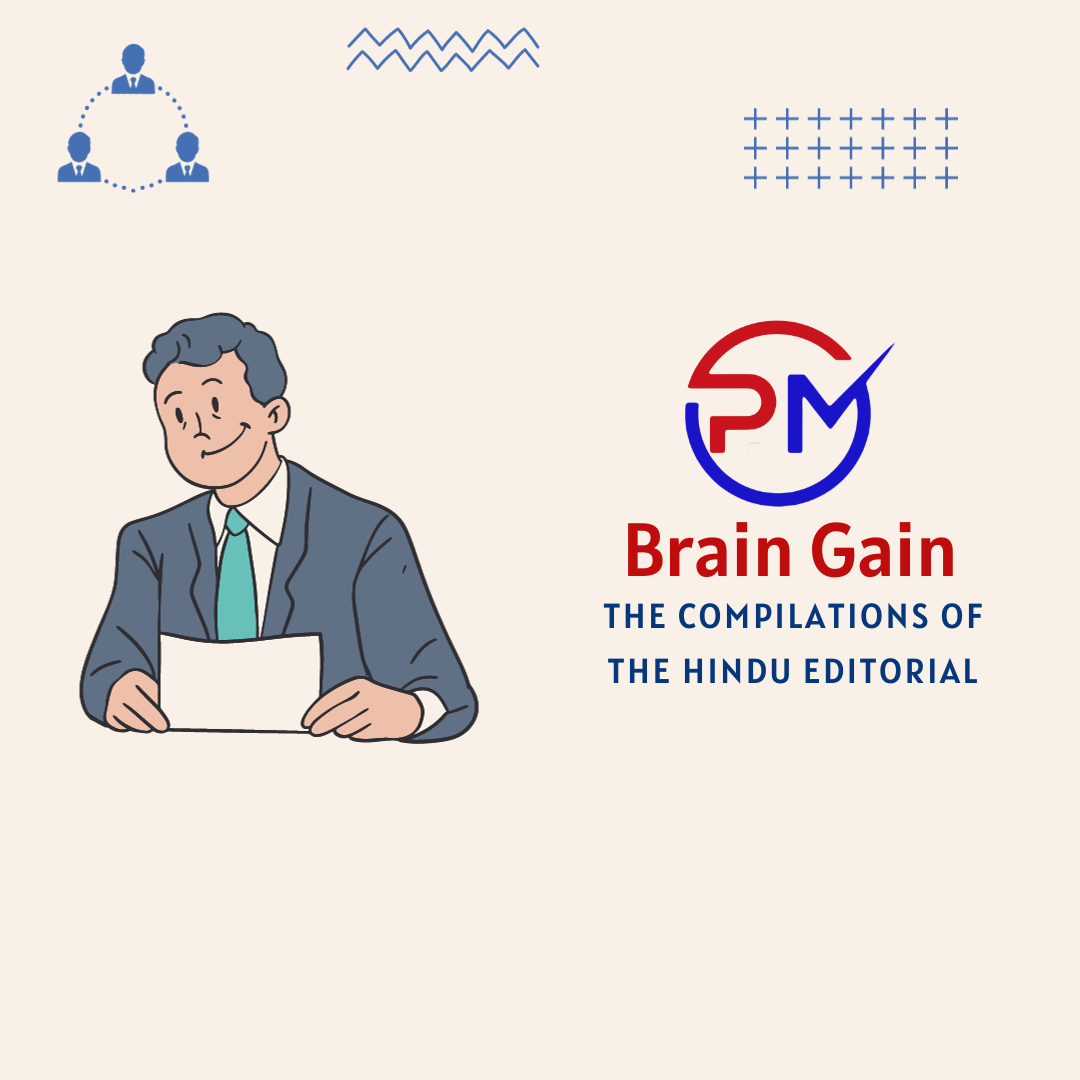Editorial 1 : MP Index reduction under the NDA is flawed.
Context: The Multidimensional Poverty Index exaggerates the National Democratic Alliance’s success in fighting deprivation.
Introduction
- Samuel Johnson, a profound literary critic, and essayist, wrote, “Poverty is a great enemy to human happiness; it certainly destroys liberty, and it makes some virtues impracticable, and others extremely difficult.” In sharp contrast, conventional measures of poverty in terms of income are limited and narrowly focused on scarcity of resources to eke out a bare subsistence. But there is much more to poverty than a bare subsistence, as emphasised by Johnson and others.
Concept of capability
- Nobel Laurate Amartya Sen pioneered a rich, innovative, and broader perspective on well-being, focusing on capabilities and functioning’s. While capabilities are abilities to do this or that in a free and fair environment, functioning reflect achievements.
- An ability to live a healthy life, for example, is not necessarily related to affluence as it could result in obesity and vulnerability to non-communicable diseases.
- Achievements such as being healthy, on the other hand, require a nourishing diet and physical exercise.
- Professor Sen has, however, resisted aggregation of concepts such as capabilities into an overall measure of well-being as he believes that each capability is important in itself.
The MPI story
- Unfortunately, the United Nations Development Programme (UNDP) seized upon capabilities to construct an overall measure of human development with uniform weights of the three components: health, education and standard of living and their sub-indices.
- Following this methodology, NITI Aayog and the UNDP released recently a National Multidimensional Poverty Index/MPI: A Progress Review 2023, also replicated in the UNDP Report, Making Our Future: New Directions for Human Development in Asia and the Pacific, released on November 7, 2023.
- Hence, these reports suffer from the same flaws as the UNDP human development index: aggregation with uniform weighting. But, the MPI story is further distorted, as elaborated on below.
- Astonishingly, the MPI 2023 estimates show a near-halving of India’s national MPI value and a decline from 24.85% to 14.96% between 2015-16 and 2019-21. This reduction of 9.89 percentage points implies that about 135.5 million people have exited poverty between 2015-16 and 2019-21.
- Besides, the intensity of poverty, which measures the average deprivation among the people living in multidimensional poverty, reduced from 47.14% to 44.39%.
Estimates, misleading and ill-informed.
- The MPI relies upon National Family Health Survey (NFHS) 4 and 5, which are not detailed enough for its estimation. Moreover, NFHS 5 is blocked as its estimate of open defecation contradicted exaggerated official claim of its complete elimination.
- Ideally, NFHS 4 and 5 should have been combined with the 75th Round of the NSS on household consumption expenditure. Unfortunately, this was abandoned too, as leaked poverty estimates indicated a rise.
- What casts further doubts is the havoc caused by the COVID-19 pandemic in 2020-21. Millions lost their livelihoods, thousands died in reverse migration and from a lack of access to vaccines and medical care.
- In fact, as a consequence of this epidemic, there was a huge economic shock from which the Indian economy has been struggling to recover. To illustrate, GDP growth has declined from 8% in 2015-16 to 3.78 % in 2019-20 and slumped -6.60 in 2020-21, as also per capita income.
Focus on covariates
- Our recent analysis focuses on covariates of the MPI that include per capita state income, its square, share of criminals among State MPs, share of urban population, and health and education expenditure and unobserved state fixed effects (e.g., how progressive a State is).
- If we compare elasticities of MPI with respect to each covariate (i.e., proportionate change in MPI due to a proportionate change in a covariate such as State per capita income), the largest reduction in MPI is due to higher State per capita income. But since income decreased drastically, MPI spiked.
- The next in order of importance is urban location. A 1% increase in urban location results in a 0.90% increase in MPI. This is not surprising as rural-urban migration is associated with growth of slums and sub-human living conditions.
- However, reverse migration during COVID-19 may explain why the effect on MPI is less than proportionate.
- Both health care and education expenditure are associated with lower MPI — the elasticity of the latter is higher (in absolute value), implying that a 1% increase in the latter reduces MPI more than the same increase in the former.
- As State-level estimates suggest a decline in educational expenditure, a rise in MPI is likely. Although State-level health expenditure rose to combat COVID-19, it fell far short of what was needed.
- If the share of Members of Parliament with criminal cases in total State MPs exceeded 20%, the higher was the MPI. This is not surprising as criminal Members of the Legislative Assembly and MPs are notoriously corrupt and siphon-off funds allocated for social safety nets and area development programmes.
- Indeed, what is alarming is their rising share — 24% of the winners in the Lok Sabha election in 2004 had a criminal background; it rose to 30% in the 2009 general election, 34% in the 2014 election, and 43% in the 2019 election.
Reduction between 2015 and 2019-21 is considerably lower than the official estimate.
- If we go by our estimates of MPI, the reduction between 2015 and 2019-21 is considerably lower than the official estimate: 4.7 percentage points compared with 9.89 percentage points.
- Our selective review of MPI estimates shows that poverty rose in India’s most populous State, Uttar Pradesh, by over seven percentage points.
- Of the States that went to the elections in November (Chhattisgarh, Madhya Pradesh, Mizoram, Rajasthan and Telangana), we find that the MPI fell in Chhattisgarh (by over six percentage points), in Rajasthan (by two percentage points) and, most strikingly, in Madhya Pradesh (by about eight percentage points).
Conclusion
- In conclusion, not only does the MPI exaggerate the NDA’s success in fighting deprivation but also perhaps more seriously obfuscates conventional measures of it which may unravel a contradictory story of poverty.
Editorial 2 : Creating certainty
Context: Healthier inflows from GST offer policy makers the bandwidth to fix its flaws.
Introduction
- The Goods and Services Tax (GST), which turns six and a half years old this month, has yielded almost ₹3.4 lakh crore through October and November. While revenues in October marked the second highest monthly collections, November’s kitty is the third highest.
- Both these months also recorded accelerated revenue growth after a sequence of slowing upticks that culminated with September recording a 27-month trough of 10.2%.
| Goods and services tax (GST)GST is a unified tax system that replaced multiple indirect taxes levied by both the Central and State Governments. Under GST, both the Central and State Governments share the authority to levy and collect taxes on goods and services. This has led to greater harmonization and uniformity in the tax structure across States, promoting economic integration.The GST system follows a dual structure, comprising Central GST (CGST) and State GST (SGST), levied concurrently by the Central and State governments, respectively. Additionally, an Integrated GST (IGST) is levied on interstate supplies and imports, which is collected by the Central Government but apportioned to the destination state. |
Festive fervour
- Festive fervour surely bolstered last month’s nearly ₹1.68 lakh crore of GST revenues, which were based on transactions in October, and that trend may persist this month as well on the back of anticipated last-minute Deepavali spending.
- Prior to this two-month spike, GST revenues had crossed ₹1.65 lakh crore on only three occasions, which were typically driven by year-end compliances.
- Now, the average monthly collection so far in 2023-24 stands at ₹1.66 lakh crore, and economists believe central GST receipts may surpass Budget estimates even if one factors in a relative slowdown in the final quarter of this year.
| GST CouncilThe process for creating GST Council started in India when the Constitution (One Hundred and Twenty-second Amendment) Bill 2016, for the introduction of Goods and Services Tax (GST) was accorded assent by the President on 8th September 2016. As per Article 279A (1) of the amended Constitution, the president should approve to constitute within 60 days of the commencement of Article 279A.The GST Council, consisting of the Union Finance Minister and representatives from all States and Union Territories, was established to make decisions on various aspects of GST, including tax rates, exemptions, and administrative procedures. It played a crucial role in shaping the GST framework in India.The GST Council will make recommendations on:GST shall include taxes, cesses, and surcharges;Goods and services which possibly will be subject to, or exempt from GST;The threshold maximum value of turnover for the function of GST;Rates of GST;GST laws, principles of levy, apportionment of IGST and principles associated with place of supply;Special provisions with respect to the eight northeastern states, Himachal Pradesh, Jammu and Kashmir, and Uttarakhand; and other associated matters.Other matters pertaining to the implementation and regulation of GST in India. |
Moving from “uncertainty to certainty”
- With revenues buoyant, in no small part due to tighter compliance and a crackdown on tax evaders, the government must consider resetting its ambitions and work towards making the GST a truly good and simple tax, as it was promised to be.
- At a recent industry interaction, responding to concerns about the manner in which a spate of GST demand notices and investigations have unfolded in recent months, Finance Minister Nirmala Sitharaman said the GST is still at a stage of moving from “uncertainty to certainty” on some grounds and those aspects are being sorted out now.
- That certainty needs to be pursued at a broader level to provide genuine comfort to investors about India’s tax regime being stable and predictable. For one, pending taxpayer appeals against central GST levies have risen by a quarter this year to hit nearly 15,000 cases by October and it is necessary that appellate tribunals cleared by the GST Council become operational at the earliest to unwind this pendency and set clear precedents for future tax treatment disputes.
- It is equally critical to lay down a road map to bring in excluded items such as petroleum and electricity into the GST framework as well as the rejig of its complicated multiple rate structure.
Conclusion
- With the general election ahead, some dithering on such reforms may be understandable, but the GST Council must not lose focus of the unfinished agenda and keep deliberating on its to-do list, so that these steps can be fast-tracked after the Lok Sabha election.


